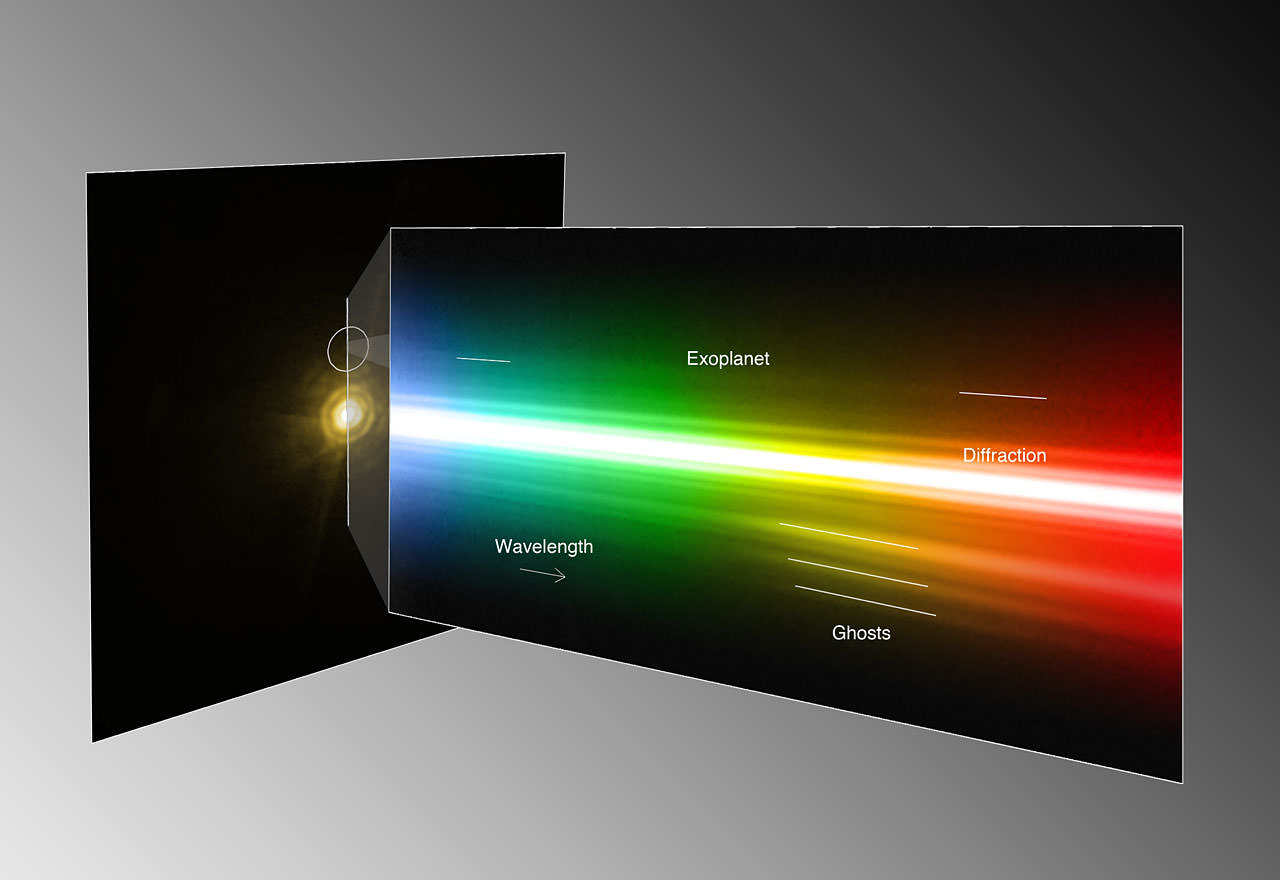In this series we are exploring the weird and wonderful world of astronomy jargon! You’ll get the whole picture with today’s topic: spectrum!
The spectrum of an object is perhaps the most important, the most useful, the most vital measurement one could take in astronomy. The spectrum unlocks everything from the composition of that object to its velocity. Without the knowledge of spectroscopy, we’d be much more confused about the heavens than we are.
It was Isaac Newton himself who discovered that the white light from the sun is actually made a combination of many different colors – the familiar ROYGBIV of the rainbow. Newton was perhaps the first person to measure the spectrum of our sun. He split apart the light from the sun to measure how much of each color was in that light. And that’s essentially what a spectrum is: a measurement of the amount of each wavelength of light coming from an object.
In the early days of modern astronomy, prisms were used to separate the light and create a spectrum. Nowadays astronomers use tools like diffraction gratings. But no matter the technique, the end result is always the same: cracking open a light source to see what’s inside it.
You’ll find a spectrometer – a device for splitting light and measuring the resulting spectrum – at the bottom of pretty much every scientific telescope in the world. One of the many awesome things about spectra is the loads of information packed into it. Even a single pixel is enough to gather the spectrum, and from the spectrum we can learn about the object. Indeed, some of the greatest discoveries in astronomy were made with just spectra.
One of the most powerful parts of any object’s spectrum is the appearance of lines. If the object is hot, then any elements or molecules will emit very specific wavelengths of light, which will appear in the spectrum as bright lines. If the object is blocking another light source, then the elements and molecules in the object will absorb very specific wavelengths of light, and that will show up in the spectrum as dark lines or missing gaps.
By looking for those emission or absorption fingerprints in the spectrum, astronomers can determine what the object is made of. It’s how we discovered helium in the Sun. It’s how we know that the cloud-tops of Jupiter have ammonia. It’s how we found amino acids in interstellar gas clouds. It’s how we measure the expansion of the universe.
All hail the spectrum.

